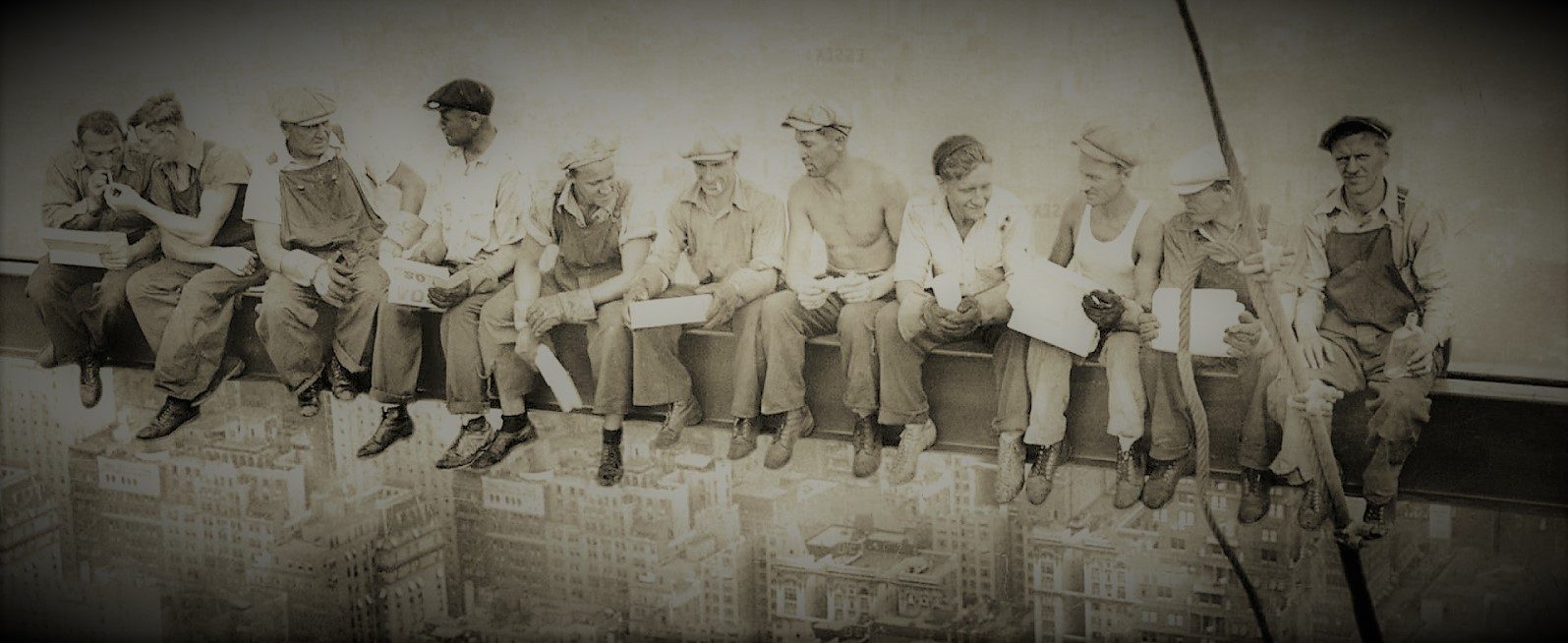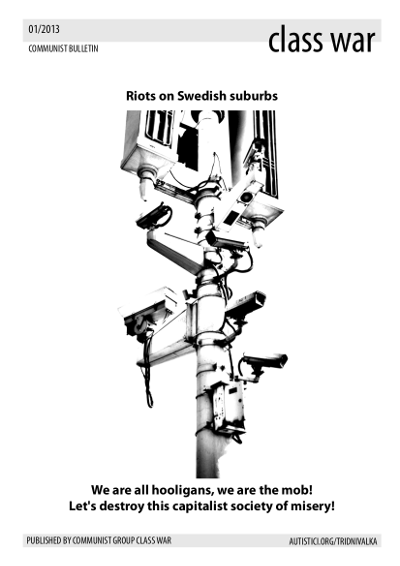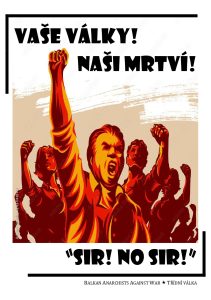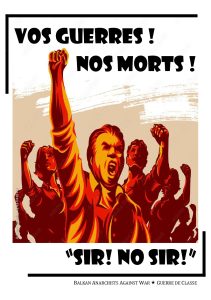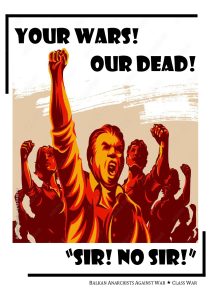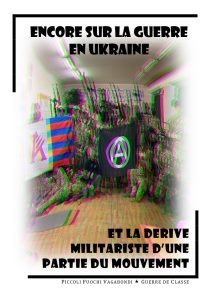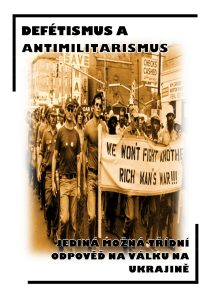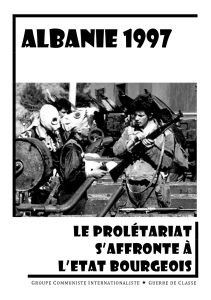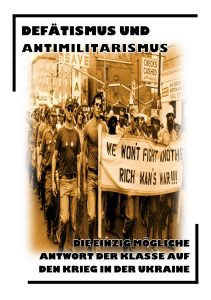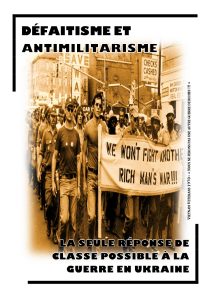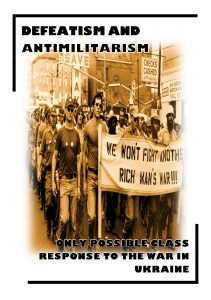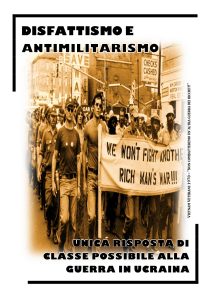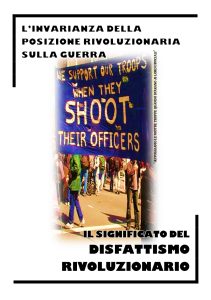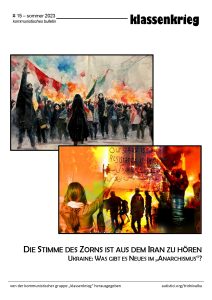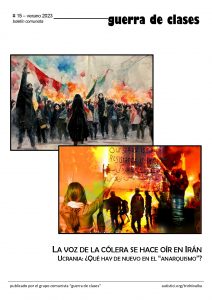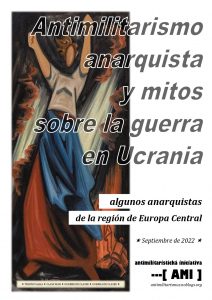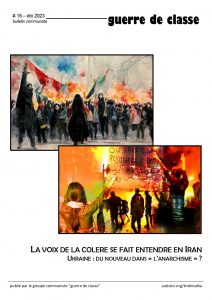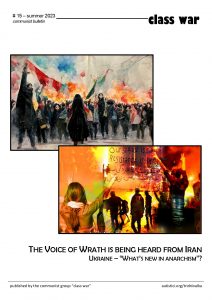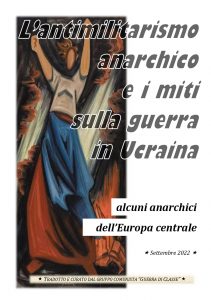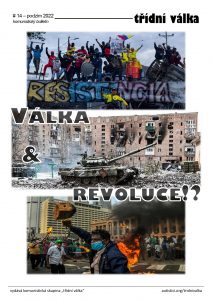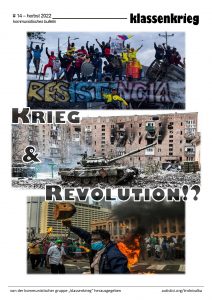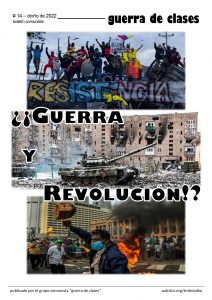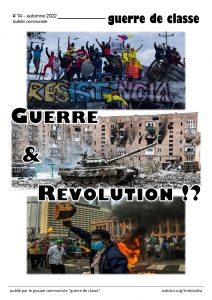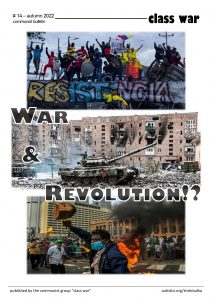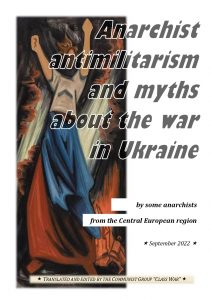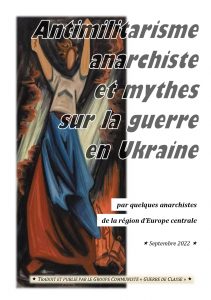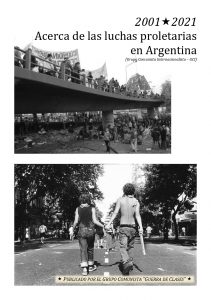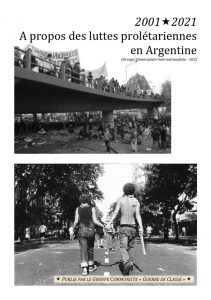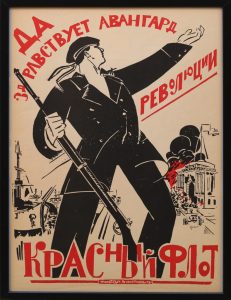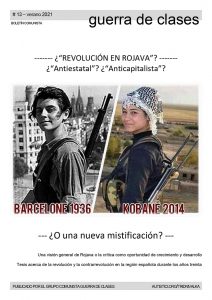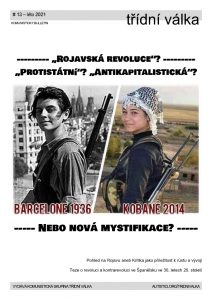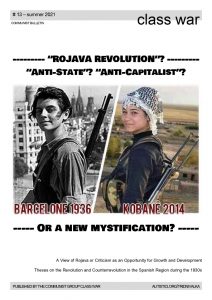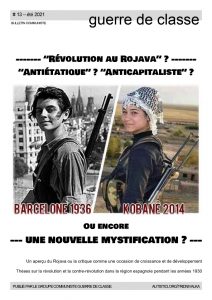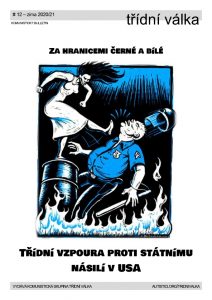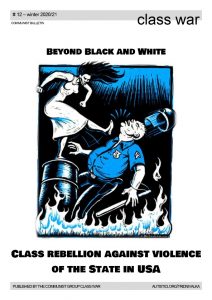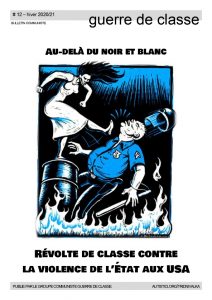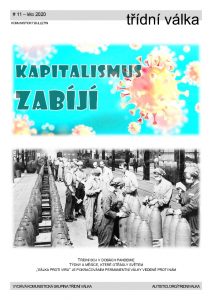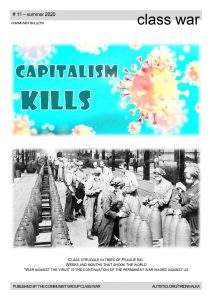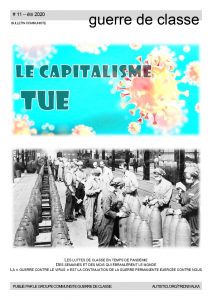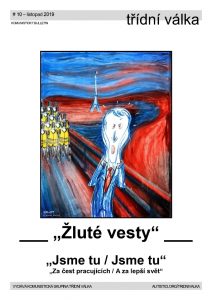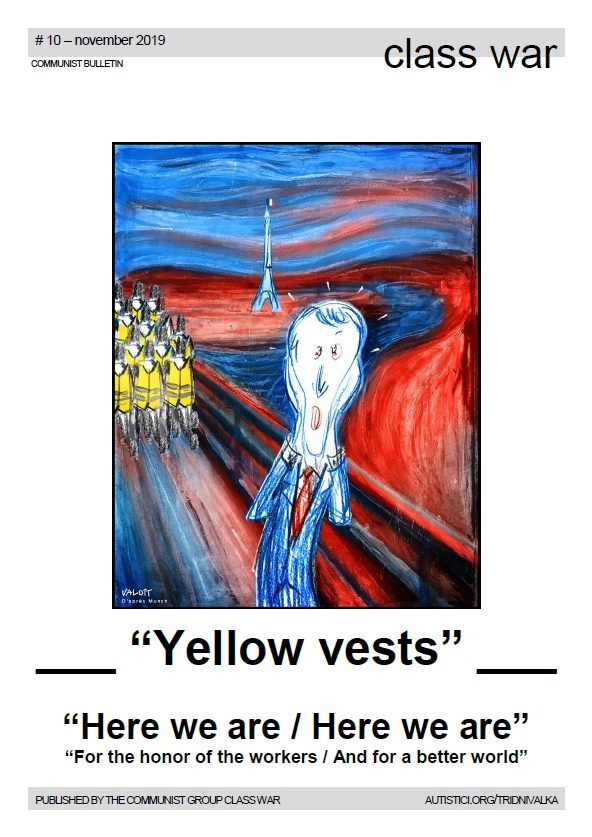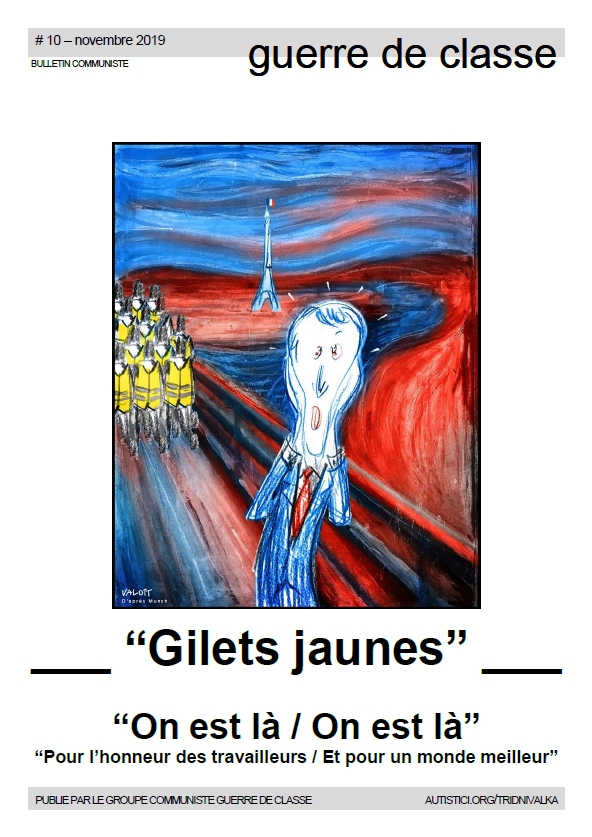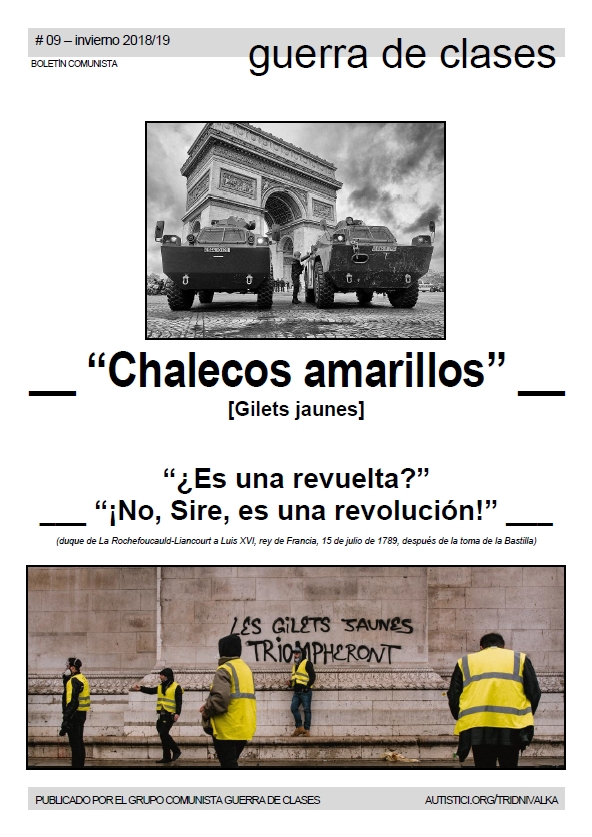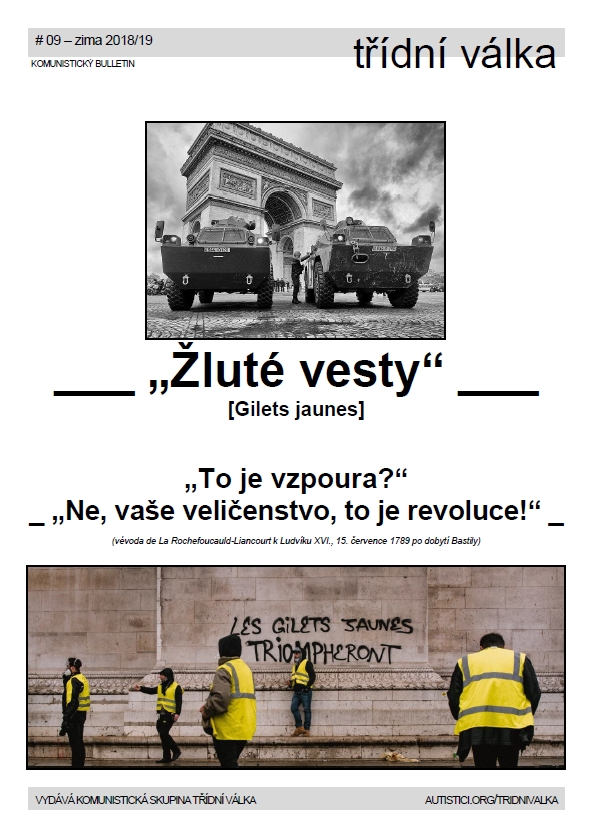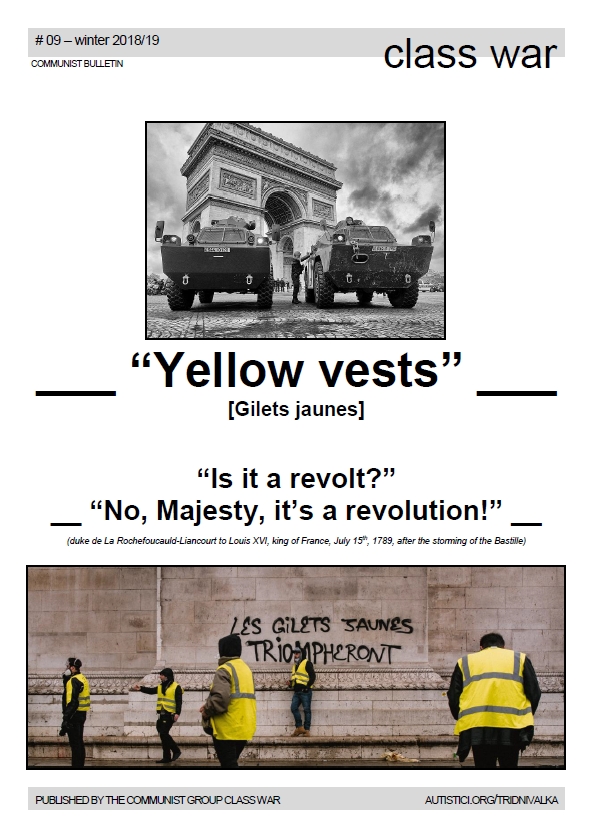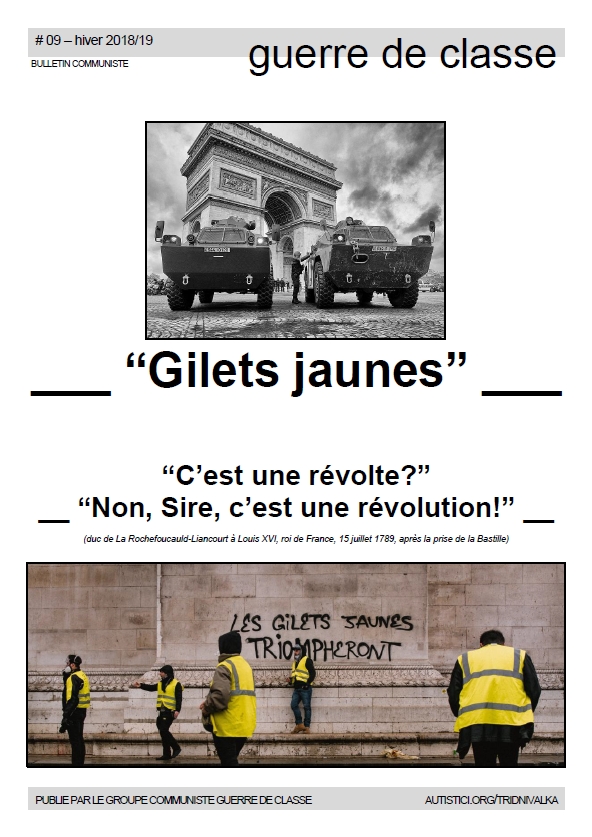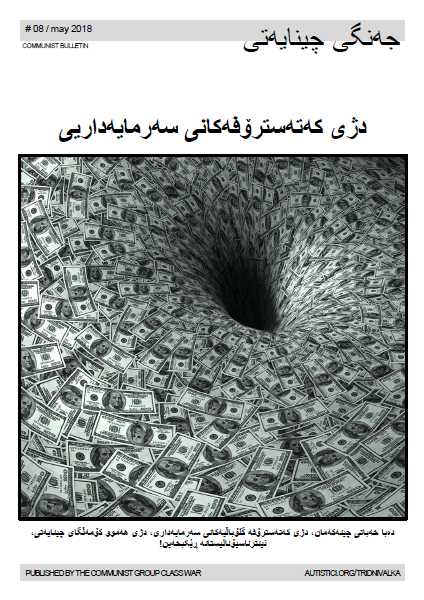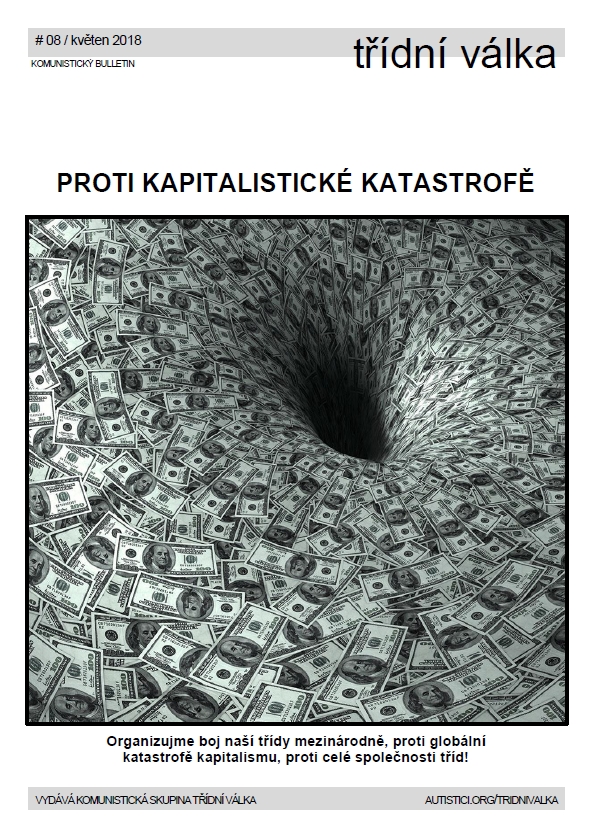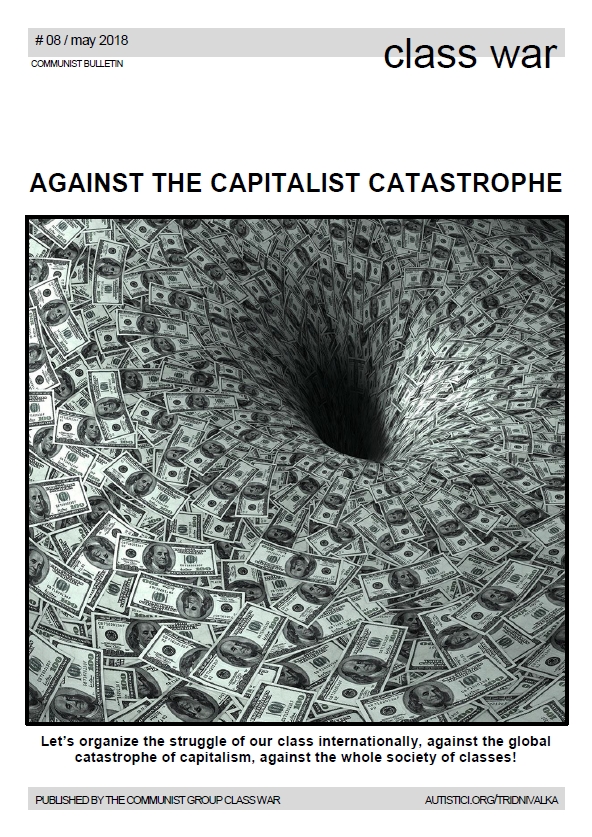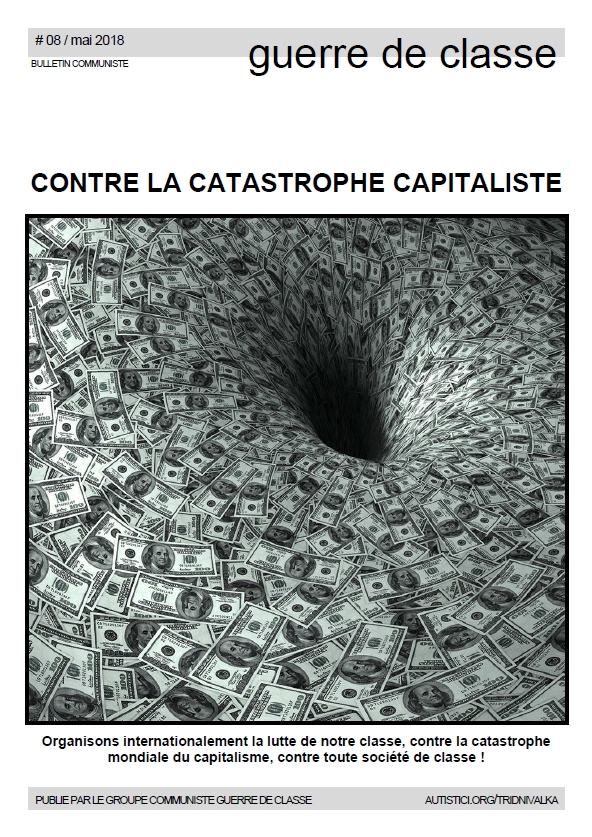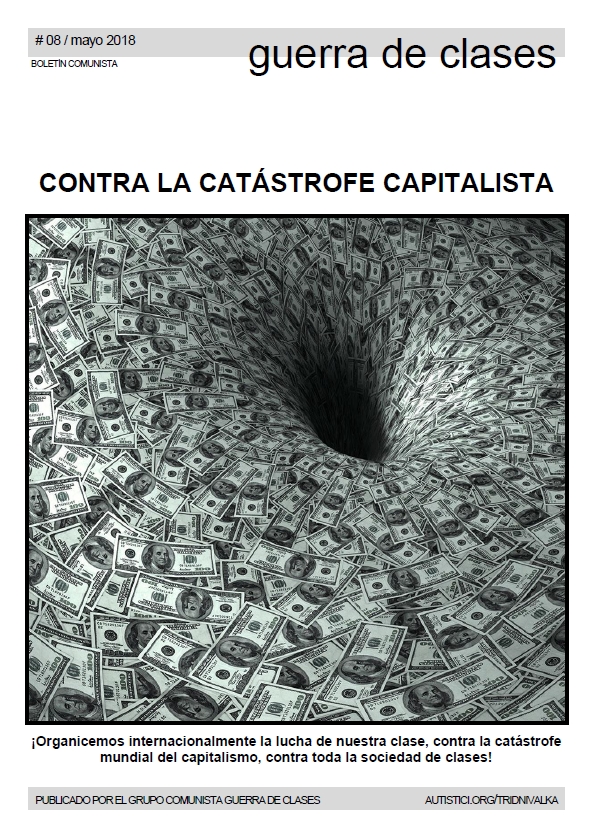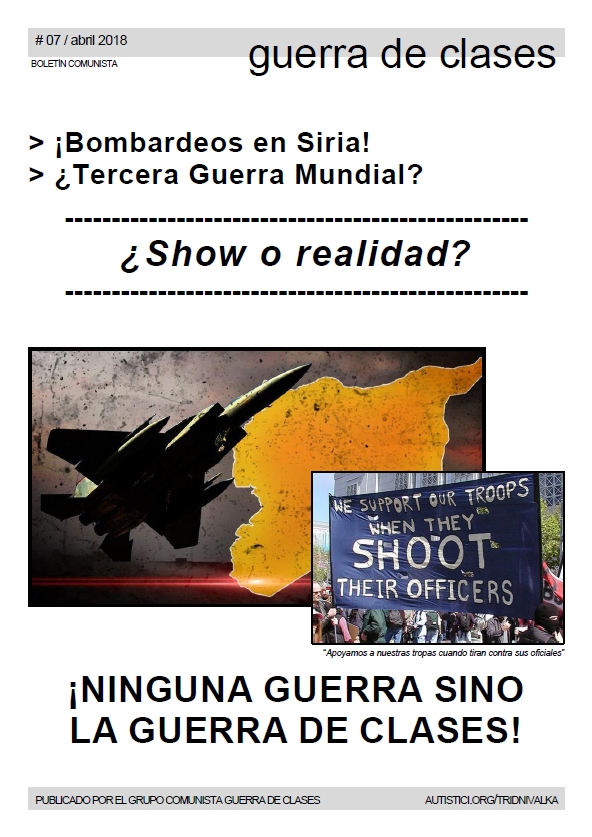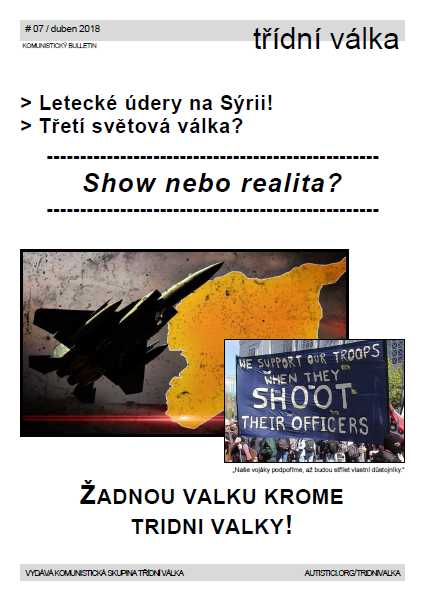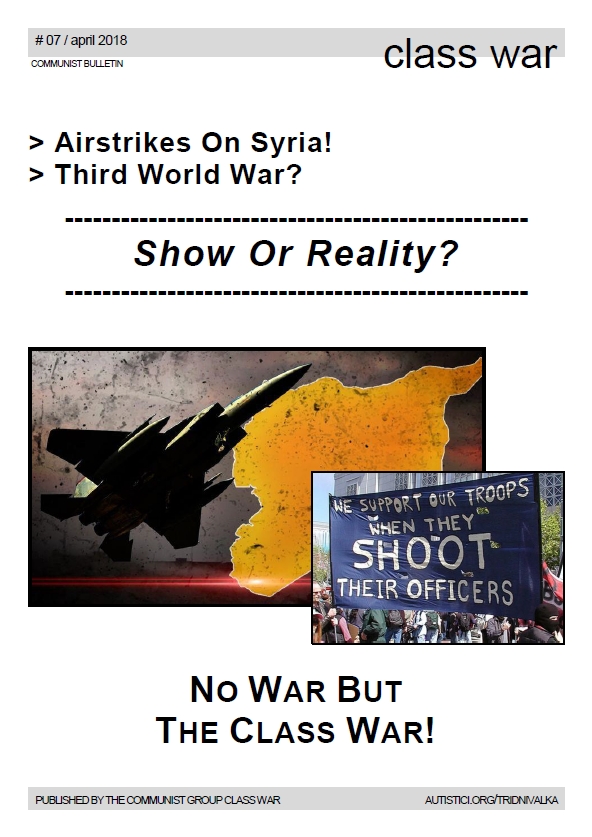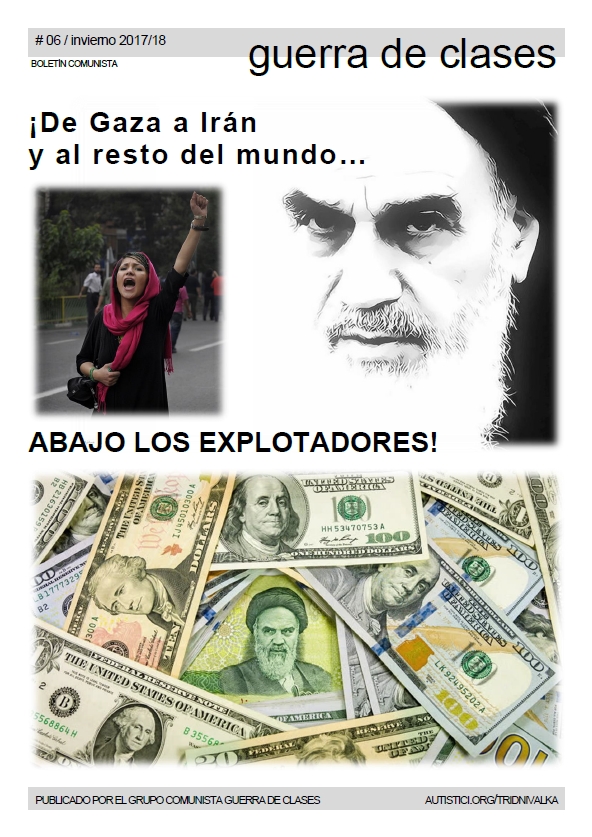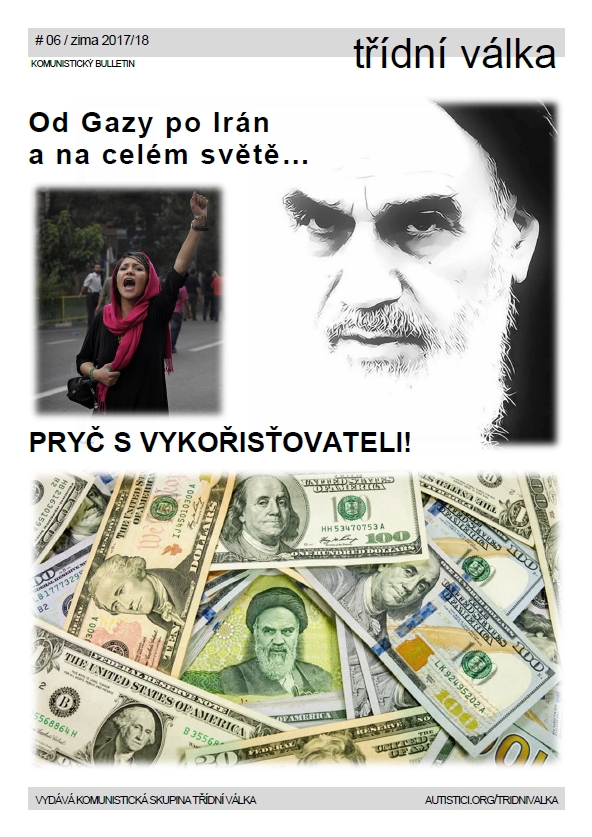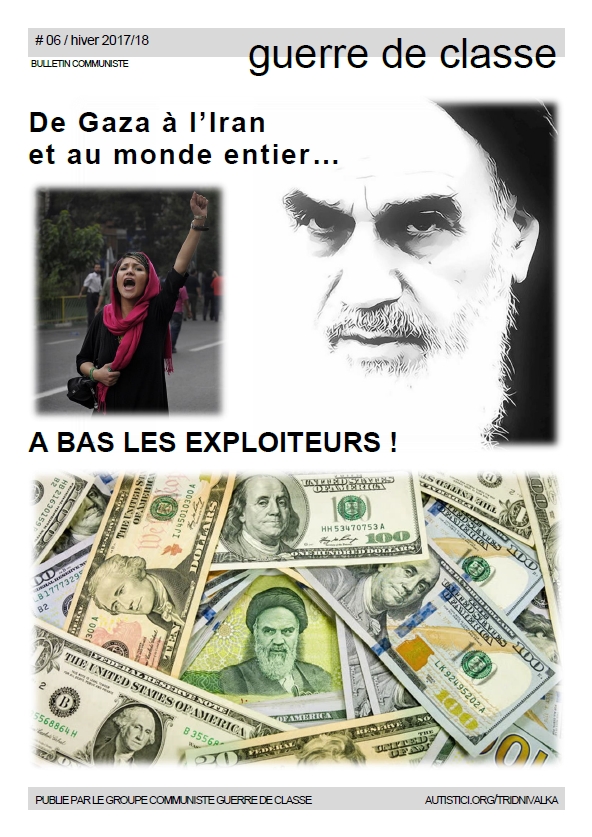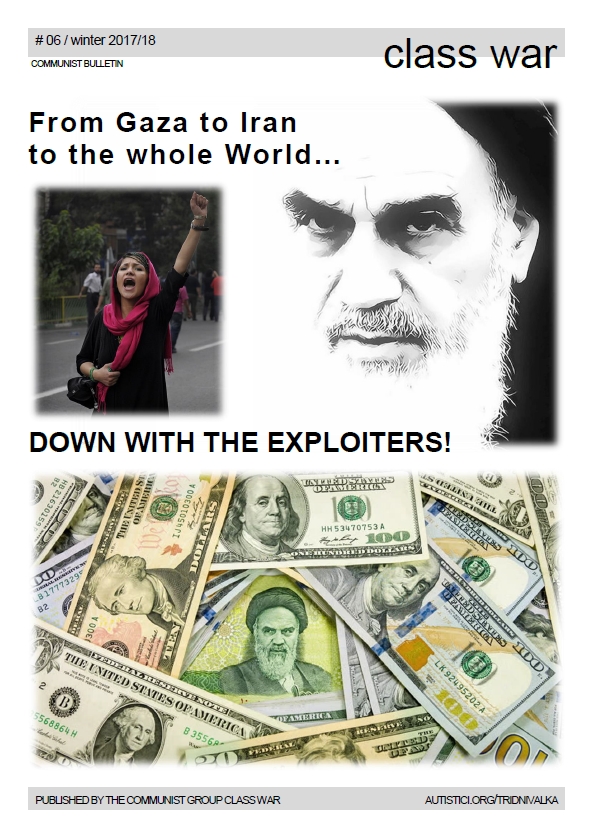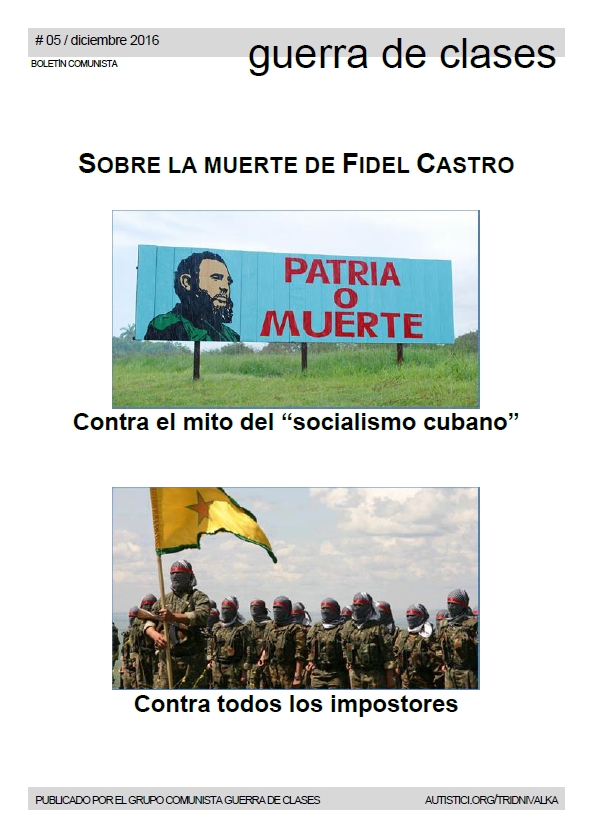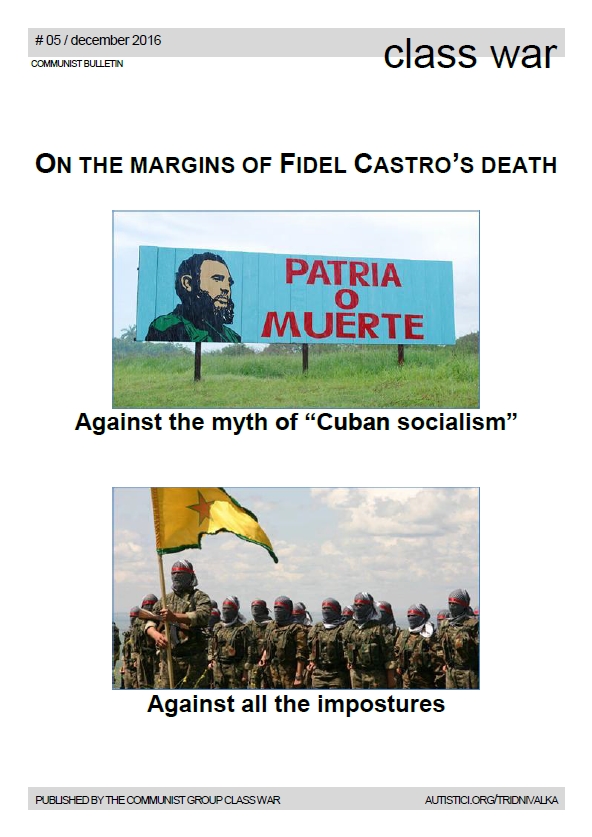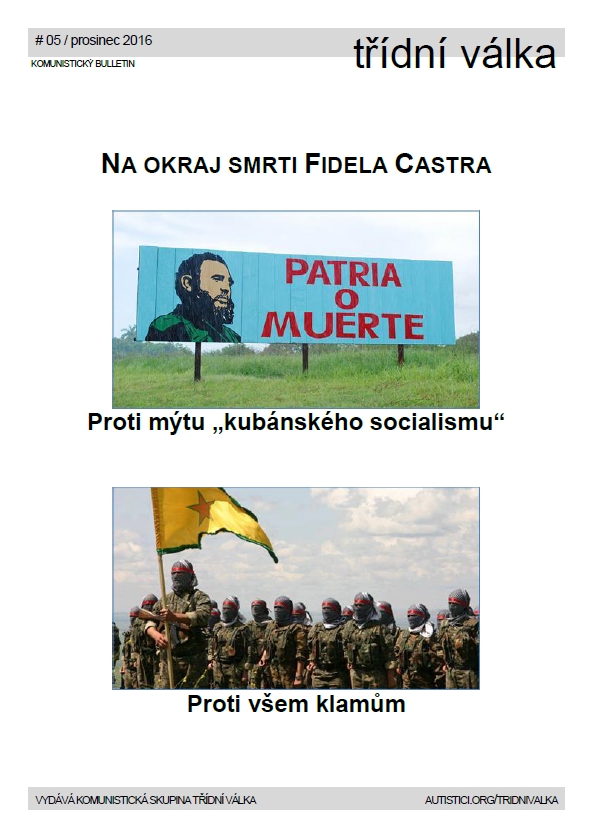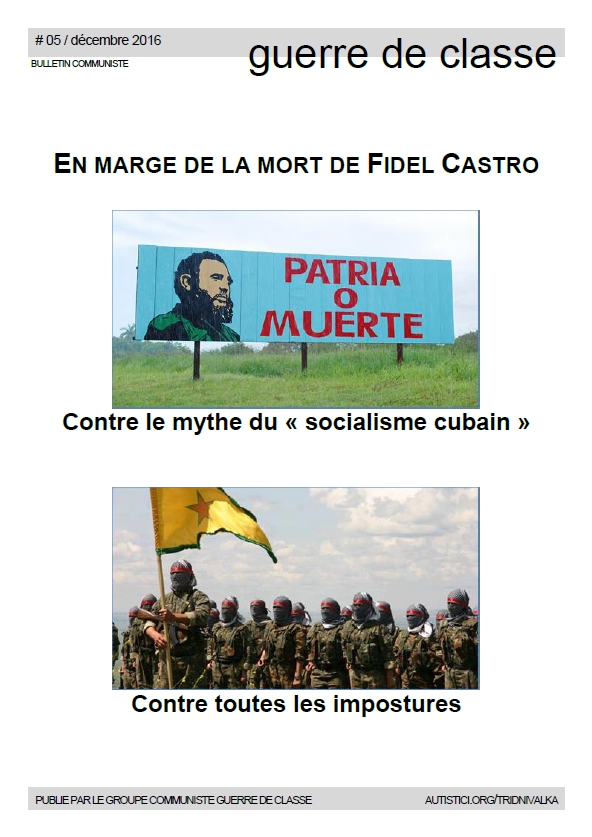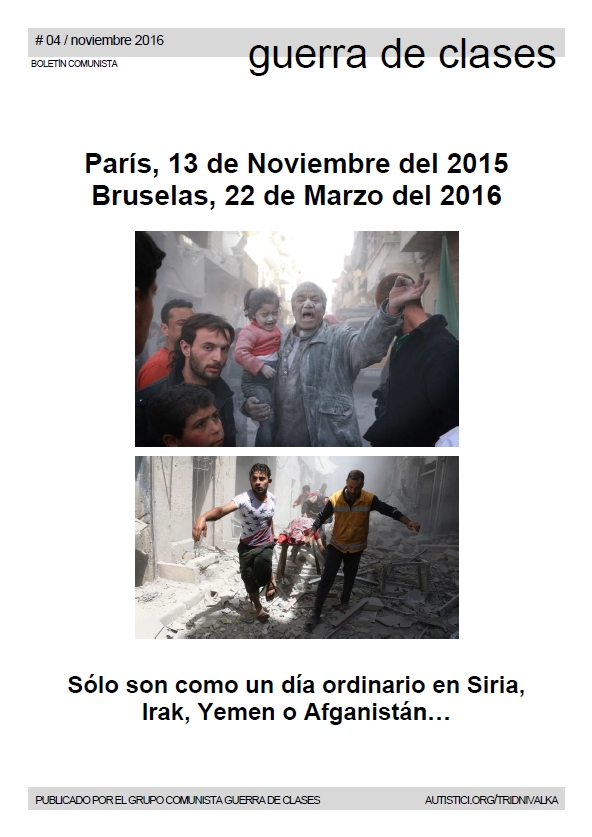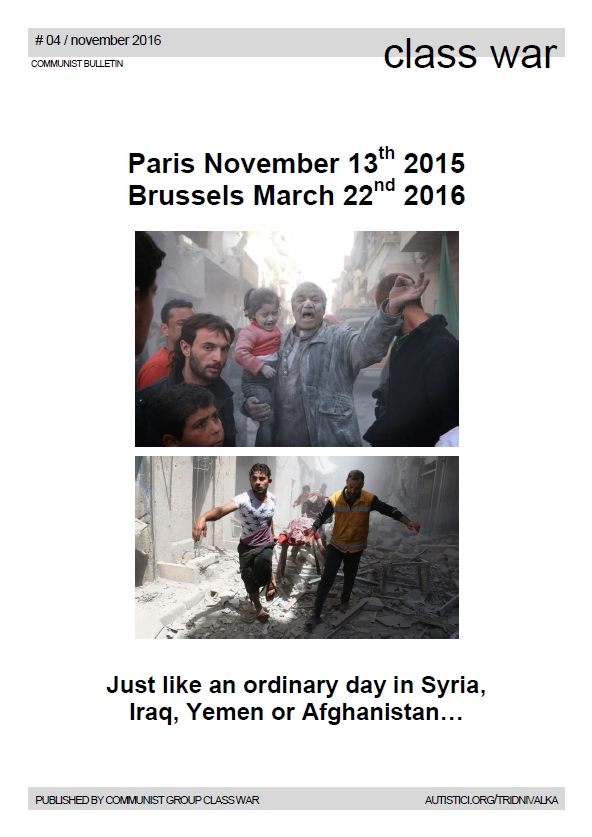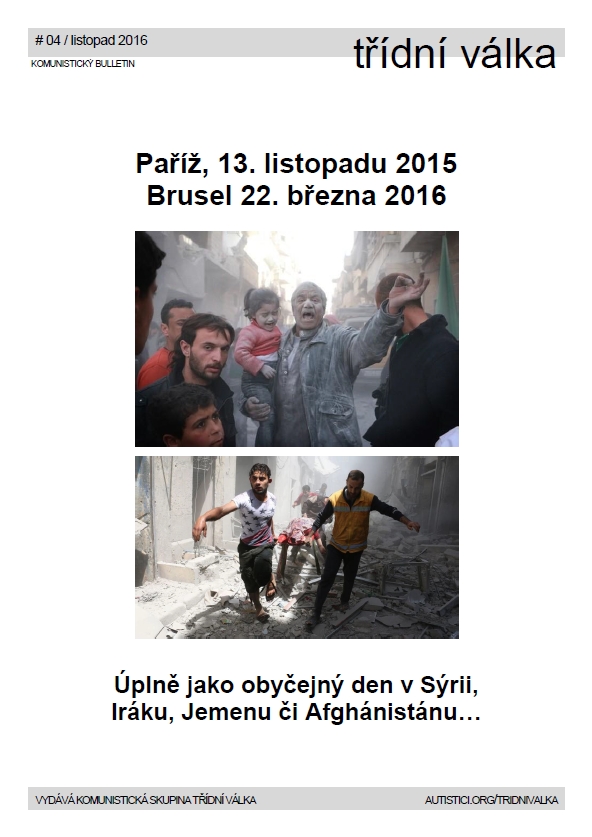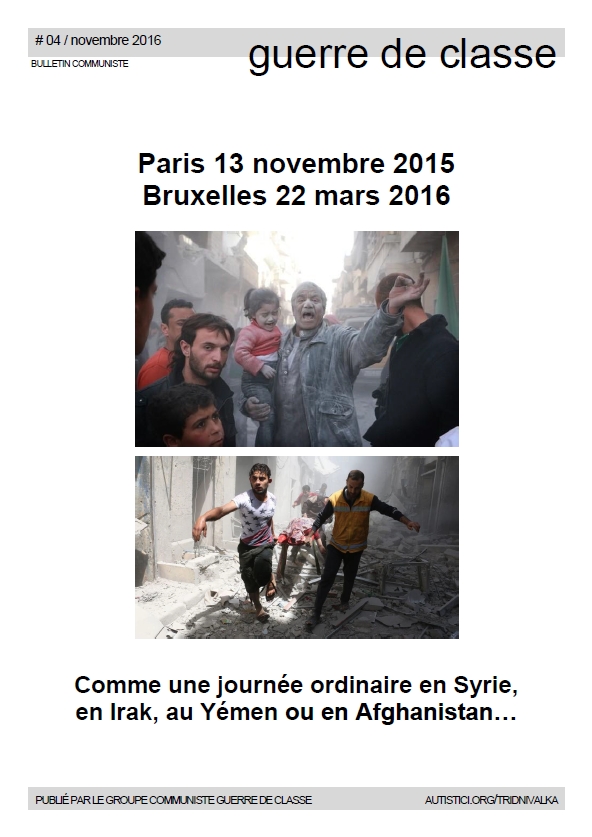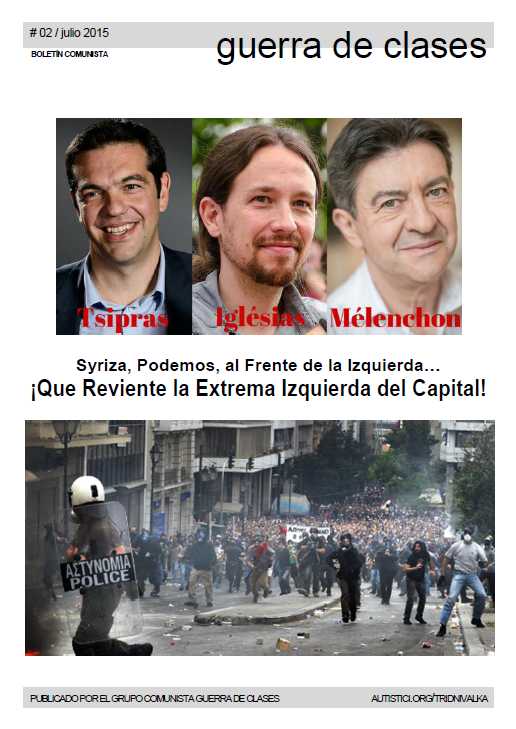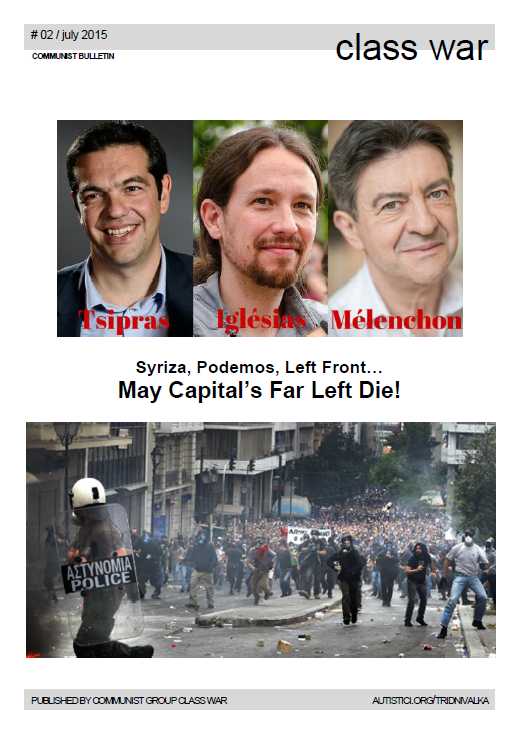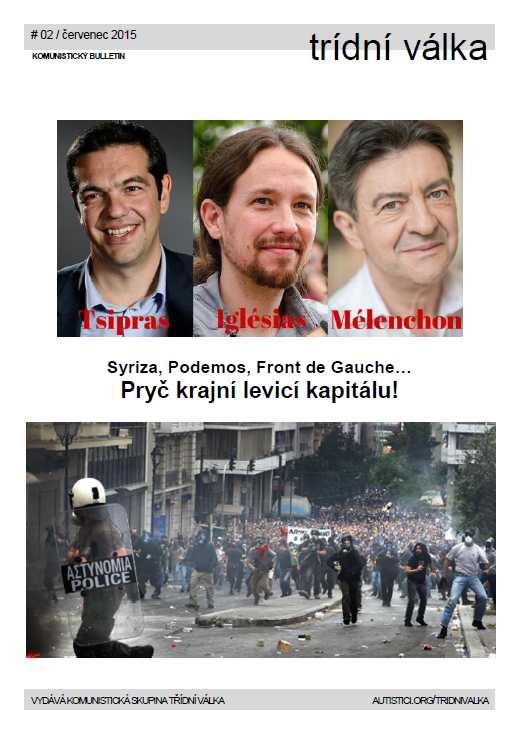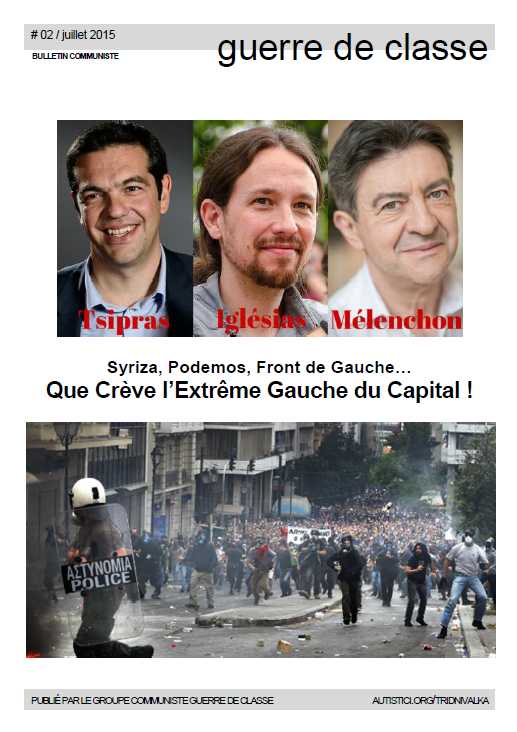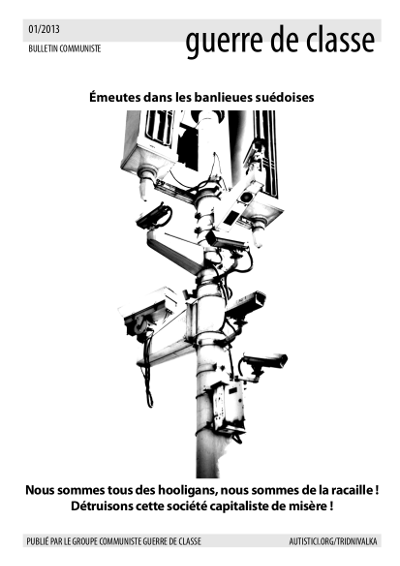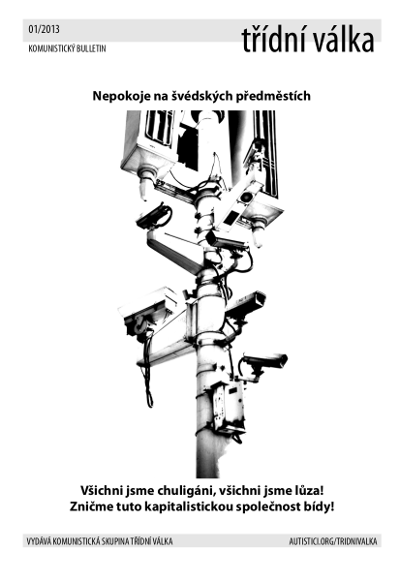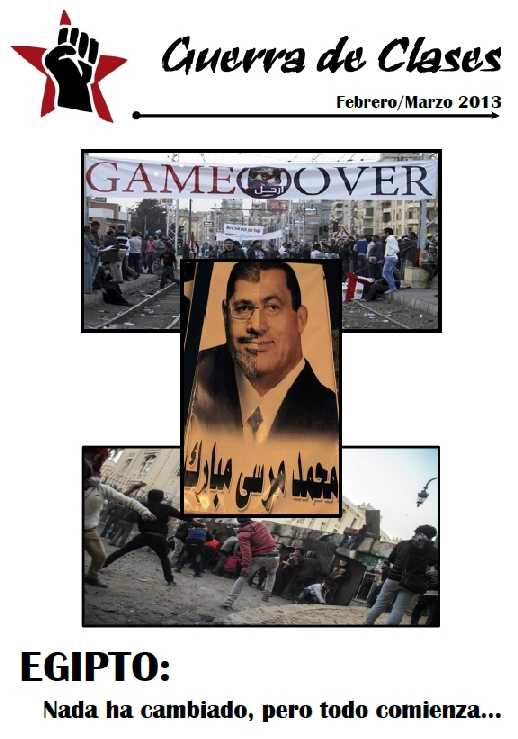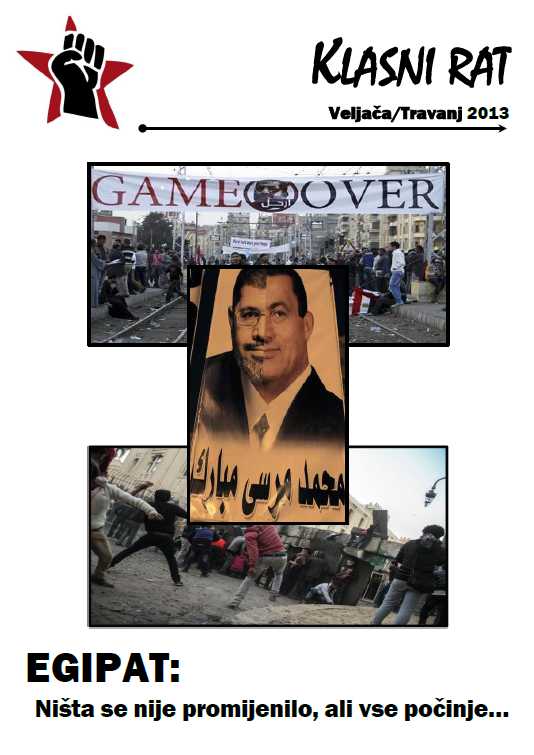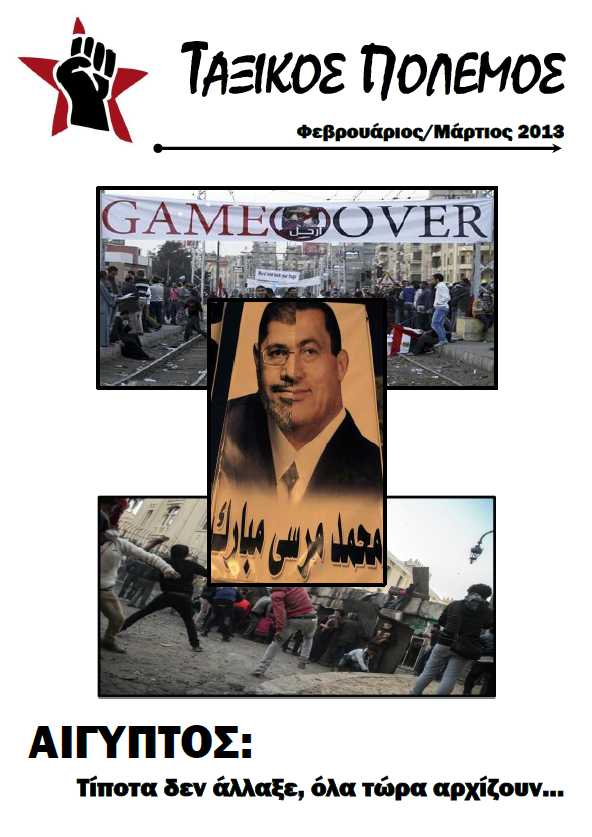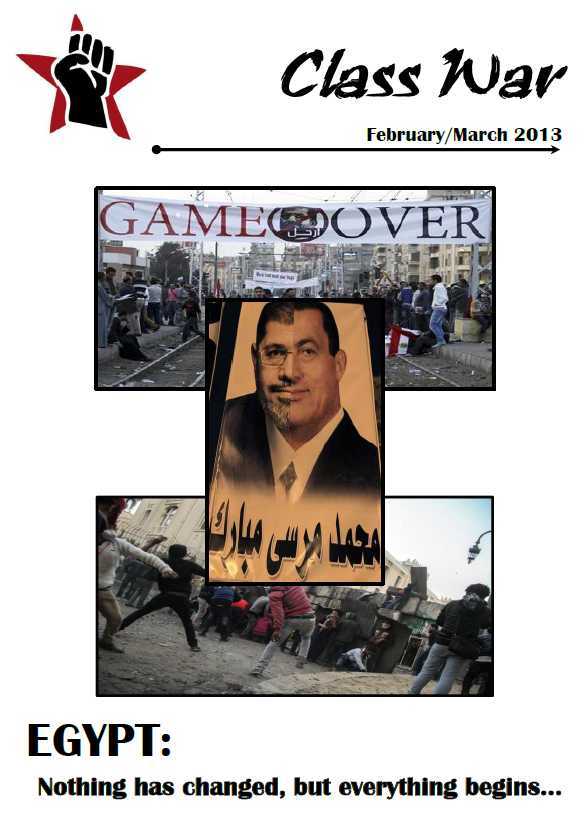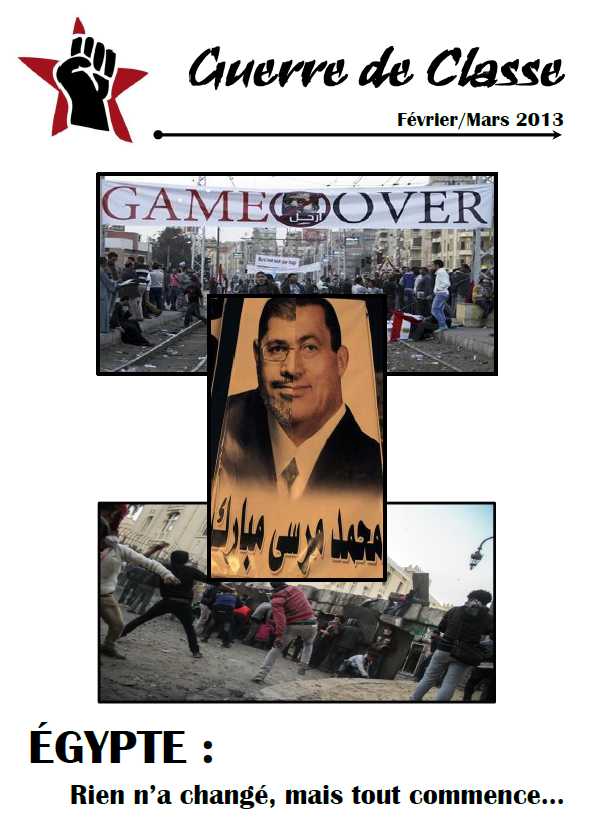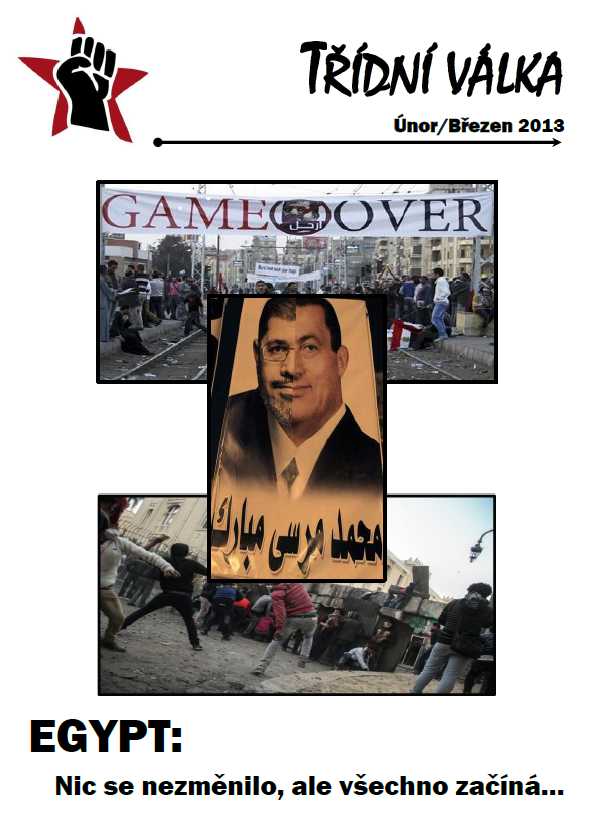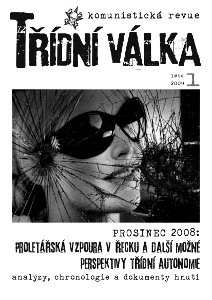Following text is from new issue of Class War, our new communist bulletin. The bulletin also includes updated Programmatical positions of Class War. Download as PDF.
***
Riots on Swedish suburbs:
We are all hooligans, we are the mob!
Let’s destroy this capitalist society of misery!
At the time when most citizens, including those that according to the sociological definition belong to the working class, indulged euphoria of this year’s Sweden’s World Ice Hockey Championship victory, first troubles of young (or not so young) proletarians started hidden with a veil of darkness in Husby, a suburb of Stockholm. First rocks thrown, first cars in flames.
The expansion of these riots to other suburbs of Stockholm, the ninth wealthiest European city, and outside of it, attracted interest not only of media which had vomited reportages with almost wartime headlines, but naturally also other representatives of the State – the state that is so proud of its reputation of social justice, the state on which the whole Left of the Capital and philanthropists of middle strata sing praises. Representatives of the State and all sorts of decent citizens of the right or the left-wing rushed with their comments – exactly as during Swedish Rinkeby riots in June 2010, England riots in 2011, riots in Greece in 2008–2009 or those in French suburbs during 2005 – and described, with their style peculiar to a rotting by-product of modern sociology, the riots as individual difficulties of poorly integrated youth, as outcome of gangs’ and criminals’ activity or as a consequence of an influence of extra leftist agitators:
“… fires that we connect to youth gangs and criminals…” (Kjell Lindgren, spokesman for Stockholm police, said on Wednesday)
“… three types of individuals are behind these riots: local youths, previously known criminals, and a small clique of professional left-wing activists – autonomists, which in plain language means violence-prone individuals and groupings to the extreme left.” (Stockholm county police on a meeting with the Minister of Justice and the Swedish Security Services)
Dagens Nyheter newspaper went even further and quoted a research which supposedly came to a conclusion that the protesters have already had existing criminal experience and have been suffering from family problems, drug abuse and mental problems. Well done (bourgeois) science!
As there are lots of immigrants living in these suburbs, many of them already the third generation, the bourgeois press quite inevitably published polemics about employment or more precisely employability of young, foreign origin proletarians from suburbs, and thus about sense of the so-called integration. We could hear lamentation (same as we could hear after riots in Rinkeby or anywhere else), over the State trying hard to set up conditions for immigrants’ integration, over how many programs had been founded and how many social workers had been called up to carry up this task, and above all… over the fact that all that costs a lot of money! And thus foreign media published on their front pages: “Failure of multiculturalism now hits even Sweden.”
Anyway, the false mask of Sweden as a paradise for the working class in the north of Europe was torn down. At last!
It’s astonishing that this untrue and superficial idea of Sweden as the working class paradise, constantly supported by non-parliamentary parties, but also by prominent representatives of the bourgeois Left – such as the Czech president Milos Zeman – held on for so long. The idea which is in Czech Republic promoted by ProAlt, so much popular among Trotskyite Left and official anarchists:
“Democratic and socially fair society, Swedish welfare state model, well prepared and fair restructuring of the state’s business sector, opening life opportunities for everybody, high quality of life including healthy environment for all…” (ProAlt, Nov 3rd, 2011)
The May unrest contributed to smash this fancy image in the eyes of a part of worldwide proletariat at least. The whole idea of Sweden state’s welfare stability, or actually its invariance in time and its resistance to impacts of crisis is just a manifestation of idealized understanding of the world. It is the same kind of cliché as when one claims there is nothing happening in Greece, because locals still go to cafés.
The riots were not a bolt from the blue, they were neither the first and necessarily nor the last event of this kind. Five years ago Swedish suburbs were swept with series of protests and cars were burning in Malmö and Gothenburg. Other riots took place in Uppsala and Sodertalje. There were smaller riots in Tensta suburb (not far from Husby) this April, connected with privatization of the suburb and subsequent increase of rents, which finally forced a developer company to withdraw its plans.
Housing, police persecution and other topics in the suburbs are the most direct consequences of this explosive situation and they are the cause for the unrests on a conscious level, they represent reasons for assaults on symbols of the power and the State, on symbols on unattainable existence and enforced discipline.
Indeed, the idea that social and historical events which men take part in are mere products of ideas or faiths, and thus an activity of their brains, is idealistic. On the contrary, an individual or a collective act is already determined before the action itself, ahead their consciousness. It is this materialistic, dialectic position taking into account entire historical process and objective exploration of contemporary social phenomenon that protects us from accepting myths, idealized truths and wishes.
Therefore, regardless of what an individual proletarian thinks, it is important to reveal that under “the visible” that is to say conscious surface, it is the material conditions which are real moving and shaking forces.
What is important is the outcome of impact of these material forces, thus antagonism between productive forces which consist principally of human beings assigned to production or being at its disposal, the way they are organized, tools and machines, the general scheme of the production, and forms, superior forms of relations (familial, juridical, political, religious…) within which entire production and reproduction of the mankind develops.
This historically temporary peace between both of these levels is disrupted in a certain moment of history and the forces get to clash with the relations. If the forces manage to sufficiently shake the society and to sweep away old forms with revolution, reorganization into new economic, social and legal forms takes place.
In the epoch of capitalism, this conflict between productive forces and social forms takes form of the struggle between the proletariat and the bourgeoisie, the classes defending opposite material interests.
This clash between productive forces and forms is everywhere – including Sweden – manifested in the fact that capitalism resembling to a living dead trying to keep its power by force of repression and/or war impoverishes entire proletarian masses in such a way that they live in conditions of absolute misery approaching those of preceding historical epochs of class societies, that capitalism had overcome with its bourgeois revolution, its liberation of an individual from serfdom, with introduction of democracy…
As for Sweden it is continuous reduction of social benefits, a destruction of the entire welfare state concept, which had been so strenuously built up by reformist forces of the social democracy as ideological and material “bumper” against real class struggle. This “bumper” that was possible to realize only due to enormous destruction of productive forces in the WW2 – thus due to defeat of genuine proletarian revolutionary movement of 1917–1921 – which completed Capital’s cyclic crisis into which it got at the beginning of 20th century. After such destruction new economical growth, extension of the production and reorganization of the whole capitalist production and reorganization of the way how the proletariat is mobilized in the production and reproduction of Capital could take place.
Crisis of suburbs, crisis of capitalist society
Thanks to its “neutrality” during the WW2 (as if any national bourgeoisie could be really neutral in such a historical epoch; on the contrary every bourgeoisie participates on capitalist wars and this process itself creates forming of big power blocks of states) that provided Sweden with a certain advantage ahead of its competitors (due to this peace that Sweden profited of to expand its industry) and thanks to strong position of the social democracy reformist forces with their ideology and practice of social “barriers”, Sweden became a destination for so-called “economic” migrants (new needed labour power successively coming from Norway, Germany, Italy, Yugoslavia, Turkey…), and later also a destination for the so-called refugees.
Indeed already in the sixties a contradiction between overall social production and social conditions appeared. While the economy was growing at the time, more than 100,000 men were subscribed to a waiting list to obtain a flat and the waiting time was as long as a decade. To solve this potential conflict the government (i.e. bourgeoisie as such) took a pledge in its Million programme (Miljonprogrammet) of 1965 to build one million of new flats at affordable price.
Today’s suburbs are a direct outcome of this measure to solve the housing issue. The story of these suburbs is more or less the same as the development of suburbs in France. Originally, in the context of post-war development, they should fit to “middle class” standard. The capitalist urbanization handles the housing issue of proletarian masses only as a question of how to effectively treat the labour force regeneration. Suburbs are only concrete rabbit hutches for proletariat. Minimal or no upkeep of the Swedish suburbs, continuous growth of their population and the last three decades of economical development, the need of urgent restructuring of the society as a result of new cycle of crisis, all that have transformed many of the suburbs in real ghettos with explosive tendency. To have as a domicile a problematic suburb, like Biskopsgården in Gothenburg or Husby in Stockholm, means to be a second-class citizen, to have a little chance to get job outside of the “ghetto” and to undergo vigorous police persecution.
Urbanistic division copies class, national or racial division in many places. Stockholm itself, divided according to these divisions, can serve as an example. The inner city, area of wealthier strata of the society, is situated around lakes and neighbouring parks. Satellite towns and suburbs are populated by working class both native-born and especially immigrants. OECD itself points out in its report that Sweden has the fastest growth of inequality among all its 34 members – so disparity between wealth of the bourgeoisie and “higher strata” and impoverishment of the proletariat:
“In Sweden, the poverty rate in 2010 (9 %) was more than twice what it was in 1995 (4 %).”
Although Sweden continuously presents itself as a flawless model of social-economic management of capitalism, in reality it has since 80’s (i.e. since exhaustion of the accumulation cycle in 70’s) and particularly 90’s (when it was hit by the real estate crisis – the worst local economic crisis since 1930’s) adopted the same measures as the rest of Europe. Measures, which for proletariat mean loss of a series of “privileges” and “securities” and which are practically manifested by liberalization of the market, thus deregulation of rules related to political conditions of buying and exploiting wage labour, reduction in tax charges, so much talked over, privatization of public services and their gradual reduction, i.e. a turn away from post-war coordinated model of social democratic management of capitalism. All this has been done in order to increase exploitation, to increase the amount of surplus value extracted from our labour, in order to improve competitiveness and profitability of the national capital.
Capital with its “solutions” prepares conditions for much deeper future crisis, and thus potentially also for future social crisis which could lead to a revolutionary change. In 2001, the Swedish bourgeoisie changed the pension system to a model in which an economically active citizen saves up money for his retirement on a sort of a virtual account. A retired man would be consequently paid from “his” savings with a sum derived from an average life expectancy with a minimum pension guaranteed. This system that of course depends on one’s incomes and therefore on one’s social, class position, offers to the proletariat “average” pensions covering just costs of living of a proletarian already useless for capital’s profitability in better case, or, in the worst case it offers starvation, misery, another social exclusion and near death.
Official data say there was approximately 300 % growth of unemployment over the past two decades in Sweden. A considerable jump growth in comparison with the previous year in the same time appeared in 2009. Youth (15-24 years) unemployment rate oscillates somewhere around 25 % during last three years. The figures are moreover probably distorted with various pseudo-employments and other “tricks” – social work, variety of benefits, studies prolongation.
The situation in the suburbs is however much more dramatic. The unemployment rate of young proletarians in suburbs such as Biskopsgården is about 45 %. An average income in Husby is approximately two-thirds in comparison with inner Stockholm.
As for Husby with its 11 thousands of inhabitants, 85 % of them of “non-Swedish origin”, social polarization and gentrification took on more obvious characteristics. Husby is situated next to the so-called Swedish Silicon Valley – Kista Science City – a modern IT district. The municipality of Stockholm had invested considerable amount of funds in Kisty and this district slowly approaches Husby borders. Therefore a special plan for Husby was started up including demolition of large housing complexes – the suburbs are already very crammed! – privatization of public spa, local health centre and the community centre Husby Träff, as well as renovation of some complexes for future more wealthy tenants, which all caused rent increase. The bourgeoisie naturally won’t forget to say that the aim here is to uplift and recompose the present character of the suburb. But in reality we can see always the same – huge shiny store windows, concrete skyscrapers and poor districts, renovated streets and buildings and houses in ruins designated for the proletariat. All social peace keepers of the State always come with their ridiculous statements:
“The conclusion to draw from this is that a housing policy that prevents residential segregation is required.” (Eva Andersson, Associate Professor at the Department of Human Geography at Stockholm University)
In this context of growing class antagonisms within capitalist society, when the proletariat is deprived of any resources and any illusions, the only solution of bourgeois domination is tightened up police surveillance and harsh repression.
That is real face of true humanity in this society fully orientated to production and reproduction of Capital! The chimera of social state vanished. However not everybody is conscious of that. The ideological domination still nourishes fancy image of Sweden as a paradise for the working class mainly in eyes of elderly people and parents of young proletarians.
Capital is racist by essence
And the same fantasy is reproduced by immigrants coming to Sweden (and to Europe generally) from Africa, Asia, Eastern Europe, etc. Facing relatively better living conditions than what they had experienced at home and going through everyday reality of struggle for survival, they are often forced to accept worse working conditions than “locals”, what bourgeoisie uses as a precedent for further pressure to decrease wages and cut social benefits.
Though before local and foreign proletarians had competed on distance of thousands of kilometres, with the rise of immigration and with current growth of unemployment, both caused because of turbulences of globalized economy and of two decades progressing “deregulation”, the proletarians nowadays rival each other within the same cities, workplaces. Proletariat can expect only major pressure on its living and working conditions with the ongoing crisis. Intermittent work, low wages, unemployment and competition are everyday reality! The fragmentation of proletarians by competition causes an escalation of the conflicts between the proletarians themselves and blackmailing from the part of the bourgeoisie. These are the material foundations for blaming foreign proletarians for shortage of vacant jobs and reduction of social expenditures, and for rising of nationalism and racism.
It’s fundamental to recall that the capitalist society is racist in essence, whatever a particular individual believes to:
“The fact that Capital buys the labour power of one race for less than another’s, the fact that the conditions of exploitation and the living conditions of one part of the proletariat are worse than another’s, reflect that in Capital’s reality a human being’s production, as a wage slave, is of absolutely no interest as a human being, but is solely determined (as with all other commodities) by the amount of social labour incorporated into him. This racist reality of Capital determines that, in the same way that the value of labour power of a qualified worker is greater than that of an ordinary worker, the value of the labour power of a ’native‘ worker, for example, is greater than that of an ’immigrant‘ worker (presupposing that the former contains more work of integration, socialisation, nationalisation and unionisation than the other).” (Internationalist Communist Group: “Theses of Programmatical Orientation”, thesis 39a)
Or in other words, if Capital can see in people’s eyes hunger and fear, then it’s easier for it to exploit and blackmail, to force a man to work as a submissive slave, too submissive and scared to raise his head. This is exactly what happens when the proletariat is fragmented by competition between the proletarians themselves, when it is deprived of its organization as a class, and thus of its party.
The Swedish state has recently launched program REVA to persecute illegal immigration and increasing political radicalism in the suburbs. Police, the armed fist of the State, has imposed militarization of the suburbs, it installed cameras and especially it set up border checkpoints between suburbs and inner cities. Because of this official racial profiling of police actions, anybody who “does not look like Swede” – a rat, a trumpet, a monkey, a nigger, as often say police pigs – is asked to show his papers or becomes a target of anti-drug random check-up. Such actions provoked great wave of protests and direct actions in the suburbs during the whole spring, it is not a surprise that the police is hated.
Fires of revolt and social firemen
The combination of destructive and self-destructive effects of the capitalist mode of production that Sweden had experienced so badly in last decades, and the impoverishment of proletarian masses that presents itself the most in the suburbs, there’s no surprise that seeds of radicalization, therefore seeds of the revolution, germinate in the suburbs.
The riots themselves, their practical actions, were like almost always, immediately provoked by police brutality or assassination. In Brixton 1981 riots began after police shot a mother of wanted son. In 1992 in Los Angeles huge riots broke out after four cops who brutally thwacked Rodney King were exculpated. Parisian suburbs burnt in blazes in 2005 after two youngsters were electrocuted in an electric transformer where they were hiding from police. After 15 years old Alexandros Grigoropoulos was shot dead in the centre of Athens, Greek cities turned into flames of massive revolt that has actually never completely finished because it transformed itself into struggles against sequence of measures Greek bourgeoisie is trying to face its financial problems with. Also London was in 2011 stricken by unrests and looting after protests related to police shoot down of a 29 years old black man. And recently there appeared another fire of revolt, one from many on this planet, – violent riots in India, China, Africa, and ongoing struggles in Tunisia, Egypt are everyday reality… – it was sparked in Istanbul, Turkey.
All those riots, burnt down streets, reapropriated products which the proletariat was deprived of, all those wounded or killed police pigs or our class brothers and sisters, prove that an explosive situation ferments within the capitalist society, that proletariat cannot any more stand the conditions of its existence – and such situations will appear more often than ever before with deepening effects of the capitalist crisis.
19th May 2013 and another assassination by police and suspicious circumstances in which the dead body was found in Husby, was just a spark launching will to revenge on the police and this society, an instinctive, spontaneous violence reflecting bestial daily war against proletariat – an assault on police, a symbol of everyday oppression, persecution and humiliation, an assault on schools, institutions of social obedience, selection, classification and a producer of false dreams achievable through better education and greater adaptability, an assault on symbols of degrading mobility connecting neglected suburbs and “better” world, the mobility of constantly obedient shuttling work force, – against cars, public transport, attack against anybody who wants to put out fire of the revolt and return everything to peaceful normality of surviving. A normality of workplace murders labelled as industrial injuries, starvation, chronic diseases caused by living conditions and stress, empty relations, and of course of the continuous police repression, State murders of immigrants and imperialist wars.
After first cars burst into flames the next day and rebelling proletarians were ready to welcome police with stones, more sirens, smoke and fires attracted crowds of curious inhabitants to the square. Reinforced police forces brutally attacked the crowd – so even those who were inactive spectators – with batons and with dogs.
During the following five days the rebellion spread to other suburbs surrounding Stockholm. Four police stations, schools, kindergartens, were assaulted with stones and Molotov cocktails. Around a hundred of cars were set on fire and cops were welcomed by rain of stones.
Besides usual bourgeois propaganda of the State, also social workers, personages of immigrant communities, community activists, thus all preservers of social peace, tried to re-establish law and order in the suburbs:
“Everyone has to take responsibility to restoring calm. (…) It’s important to remember that burning your neighbour’s car is not an example of freedom of speech, it’s hooliganism.” (Prime Minister Fredrik Reinfeld)
According to the press some inhabitants – teachers, social assistants, and parents… – created night guard units and were in a direct telephone contact with police to denounce rioters.
Contradictory or directly conformist position of radical community groups like Megafonen or Pantrarna, which fight for preservation of public services, community centres or against attacks of developers and thus against rent rising, has been revealed in the context of the riots too. Husby’s Megafonen in connection with other social groups succeeded to (temporary) stop plans of demolition and renovation of flats destined for future wealthy tenants (what would indeed cause eviction of the poorest ranks of proletariat!) and to preserve the public spa. Local community centre wasn’t closed after it had been occupied by the locals and it is so working.
The growth of radicalism of various levels exists of course even outside of Stockholm, like in Gothenburg or Malmö. Young proletarians are the main driving force of the radicalism, talking about structural racism, social problems, discrimination and they often promote their demands radically – occupations, disturbing of municipal authorities meetings etc. Some of these groups like Pantrarna are inspired by American Black Panther Party and they organize social and political life in communities – community centres, tutor classes, political discussions, martial arts lessons…
But it is not a surprise that the groups like Megafonen and Pantrarna joined – even if they have a certain understanding of riots’ essence – the bourgeois mobilization describing the riots as a spectacle of nihilism, absurd and blind violence:
“It is tragic that public transportation, emergency services and police are attacked. Sad that cars burn, that homes and commercial buildings are damaged. We share the despair with everyone else witnessing the devastation in our own neighbourhood…. (…) We urge everyone in our district to organise for justice – then cars will not be burnt, stones will not be thrown. We will develop our work against police violence, we will continue to develop our educational programs, we will continue to build our community, take care of our neighbourhoods and show that there is a way forward for our districts.” (Megafonen)
It’s about nothing else than an old good bourgeois socialism, that bourgeois socialism which was already described 165 years ago and which would only like to remove social maladies of the bourgeois society. Even Megafonen and Pantrarna want a modern society without struggles and menaces, with more education and morality – which can only serve well to bourgeois interests! They want a change of material and economic conditions but always under the existence of Capital and wage labour, and especially without of all those subversive and revolutionary elements, thus without proletariat who in its being as a class necessarily heads towards its political profiling, i.e. to consciousness programmatic blowing up of the whole of this old society in a revolutionary way. Or in other words, it is the reformism based on gradual and partial changes of the existing system.
Naturally, various far-right groups tried to make capital out of the riots for their own propagation, while acting as both social unrest firemen and supporting groups of the State, police… On internet forums these groups called on citizens to act in order to break struggles and to establish home militias.
Afterwards these swines consisting of the Swedes Party members, National Youth Federation, Swedish Resistance Movement, football hooligans and Nazis, went to the suburbs of Stockholm to “establish order”. In Storvreten where no significant riots took place, they attacked local youngsters, among aggressors there was even one politician of Nykvarns municipality. In Tumba, according to reports that the Nazis themselves put on Internet, their action was backed up and supported by police, and a part of the local inhabitants responded positively to it.
From isolated flames to the fires of revolution (towards the constitution of the proletariat as a class)
Such outbreaks of violence of the dispossessed, whose living conditions worsen more and more, are generally an evidence of tension existing within the capitalist society. And it is precisely in these situations, when patience of the proletariat is no longer on the program of the day, that we can see seeds of revolution. Even in this movement we can objectively see negation of the whole capitalist society; we consider the movement to be profoundly proletarian, regardless to what an individual participant believes. It’s a proletarian movement which rejects its own living conditions.
Yet, this havoc of eruption of class violence caused by the very bourgeois society and a vision that the mob would blow up the very bases of this world, frighten all moderate and decent reformers of the capitalism who call for more social workers, more community centres, more representatives and tutors of social peace, i.e. more social cops, more wardens over real rupture with present state of things. Reformism and repression are two equivalent methods to defeat proletariat, to break it as a non-class composed of individual workers fragmented by competition and individual interests, i.e. deprived of combative class community, its political organization and thus a perspective. Therefore the so-called welfare and reformist state will always be the state of Capital against the proletariat!
On the other hand it is necessary to be aware of the fact that many proletarians didn’t recognize themselves in these riots. Hardly anybody noticed a link between attacks on police and burning of suburb coulisses with his own class position. Sure, main actors in this case, as in many other recent suburban riots, were youngsters. And moreover of non-Swedish origin!
Majority of the proletariat thus passively sat back and watched the State trying to fit these revolts in categories of “immigrant” riots, gangster adventures or radical Islamists activities.
Bourgeoisie key to victory and continuity of its existence in this collapsing world of misery is to restrict every revolt of the proletariat to particular sectors, in order to avoid that they would spread out and create connections. That is the reason why they always point out the issues like failure of integration of immigrants, danger of Islamism, spectacle of patriotism of decent citizens, that is the reason why they underline information about millions spent to prevent the explosion of proletarian revolt time-bomb, why they portray suburbs as hell on Earth so those proletarians who succeeded to escape it could distinguish themselves from this “riff-raff”.
Indeed all these proletarians who quite naturally reproduce bourgeois propaganda are unaware of the fact that spreading crisis of capitalism, greater exploitation and unemployment, will finally force even them to raise a banner of resistance. The resistance that would be more than peaceful procession with banners and clear “positive” requests, unfortunately for all the ideologists of “genuine” class struggle of the working class, and which would meet the same police repression and attack of all state organs as were facing the present proletarian rioters. Let’s not make any illusions that bourgeoisie would not use the same level of brutality against Swedes living outside of troubled suburbs if they refused to remain servile.
The fact that these proletarians are not interested in these rebellions, they do not give their class brothers and sisters a hand, and that they shut their eyes before repression against those who do not submissively accept their living conditions any more, is a gigantic weakness.
Even for many of those proletarians who followed the unrest from distance with certain sympathies, the riots did not have any goal and perspective. They saw in them mere nihilism and self-destruction. All those burned cars –not the best target indeed – provoked denunciation that talked about working class as about car owners or as about those who will even more suffer while going to work by humiliating public transport.
Yes, we agree that these proletarian struggles have to be transformed into open class struggle where participants would not only passively react on Capital’s attacks, but who will get consciously organized in pointed attacks on bourgeois State to overthrow it and to establish their violent and revolutionary dictatorship of human needs that’s inevitably necessary for overthrowing the political power of the bourgeoisie and immediate destruction of the bourgeois State and for destruction of all classes, including the self-abolition of proletariat, and for establishing the classless society, the real human community.
Nevertheless we are not shocked and we would definitely never act as social firemen preventing destructive behaviour of the proletarians. We don’t think communists should stand against these “excesses”, they should on the contrary aim for the proletariat better targets. Unlike those who define classes sociologically or statically, for us the classes are not static photographs but organic acting forces forming in the struggle their essential interest, the programme.
The working class hence, or the proletariat if you prefer, seen simply as a sociological category of exploited making foundations of capitalist society, is nothing else than individuals, atomized citizens, sociological workers, producers and reproducers of the capital, whose unifying substance is only the fact that they are the human mass destined to be exploited by the capital.
We are thus neither interested in this statically defined working class, nor do we think that workers have essential moral and ethical quality just because they are workers (or that they will develop it in their process to become the class as morality and ethic is something to be destroyed in this process). Or that only because of his sociological characteristics this individual worker recognizes himself in other proletarians’ existence, or that only this defines his revolutionary essence that is now in hibernation.
We can start to talk about the class only when it’s not about a cold statistic photography, when it is not that disintegrated non-class but on the contrary when it dynamically constitutes itself in the struggle as an organic power, when it takes into account its interest, the programme, and thus its conflict with the other class which has organized its state domination, when it acts as a force that establishes revolutionary link between itself in present society – the exploited class – and future superior level of social organization achieved by force of revolution.
This is the meaning of famous sentence of Marx:
“The working class is revolutionary or it is nothing,” (K. Marx’s letter to Schweitzer, 1865),
in which he clarifies that either the proletariat really acts as a class, i.e. reveals its interests, its program, when it organizes itself as a party, or it does not exist as a class.
Concerning the riots on Swedish suburbs, it is astonishing that almost no looting took place (or at least it seems so), looting that in fact is nothing else than a reappropriation of a part of what the proletariat has produced and what the bourgeoisie deprives it of. If it was really like that, it’s quite possible that the illusion of community fabricated by radical social-democratic groups really prevented the fighting proletarians to negate class dominance of bourgeoisie over products of labour. It’s then even pretty possible that on conscious level of individual proletarians it was a desperate cry in the face of the society to call an attention to their position, an attempt to not to be further invisible. Hard to say, information is scarce.
Whatever, the flames of the revolt seem to be for the time being extinguished. The revolt didn’t push itself through outside of suburbs; it didn’t put clearly to its forefront the thesis about necessity to storm the whole bourgeois society, underneath the proletarian cannot breathe anymore.
The capitalist society cannot find any solution of its inner contradictions but brutal repression or a new war in which it will again slaughter millions of proletarians in order to gain some time before the next crisis of its mode of production will appear. The unrest, the movements will sooner or later – and now with the worldwide crisis of capitalist economy we can be sure it won’t take long time, as already today flames of another revolt blaze in other cities – come back with new energy.
Because of this reason do not let us to be fooled with the limits and weaknesses of these struggles in Sweden: isolation of the most combative sectors of the proletariat, their confinement in suburbs that can be easily militarily controlled by counterinsurgency forces, indifferentism of many workers towards radicals if not direct collaboration with our class enemy while denouncing us to the repression.
Let us strengthen and consolidate the spirit and energy of the current revolt while showing interest to much larger and deeper class movements worldwide and developing with them: e.g. Turkey, Brazil, Egypt, etc., where our class brothers and sisters confront several key sectors of the State, while shaking all strata and structures of the society (army, education, labour, religion, sport, etc.). In this way we can affirm once again that, when the world of Capital is getting faced with acceleration and increasing of social movements, with a simplification, exacerbation of class antagonism all over the world, fear begins to go over to the other side…
Let us develop our class associationism, let’s organize the most radical elements stemming from informal or formal structures of combatant proletarians, those who are critique towards the limits of the movement.
Open conscious revolutionary perspective won’t mechanically arise from each fight. Let’s build up permanent revolutionary structures that would create a link between individual struggles, draw lessons of them, and that would in next round be function as tools for remelting spontaneous isolated fights into general revolutionary proletarian struggle which won’t be either political or economical, but will be total revolution, a universal emancipation of humanity – the communism.
“The Communist revolution is the most radical rupture with traditional property relations; no wonder that its development involved the most radical rupture with traditional ideas.” (K. Marx, F. Engels: The Manifesto of the Communist Party, 1848)
If this is mob, so we belong to it as well!
Get ready for next round!
Long live to communism!
Class War, August 2013
